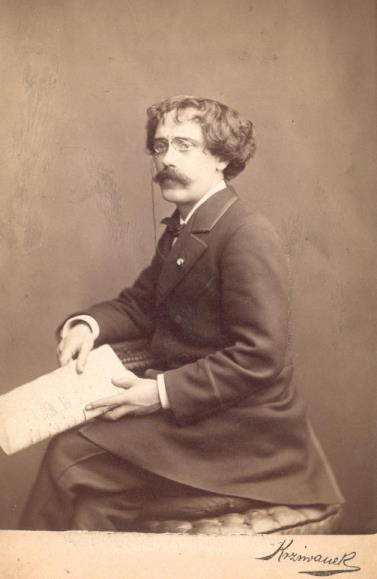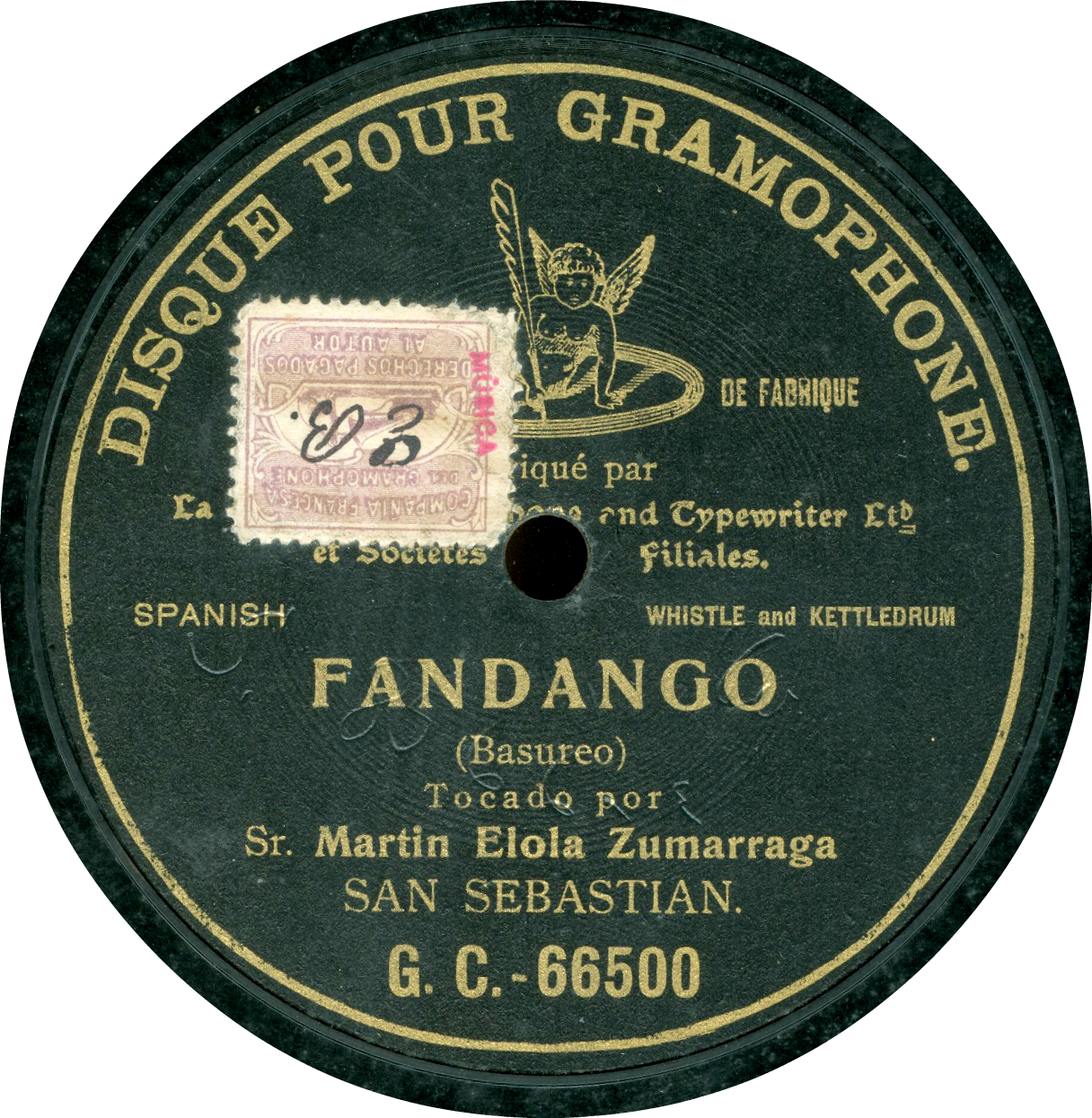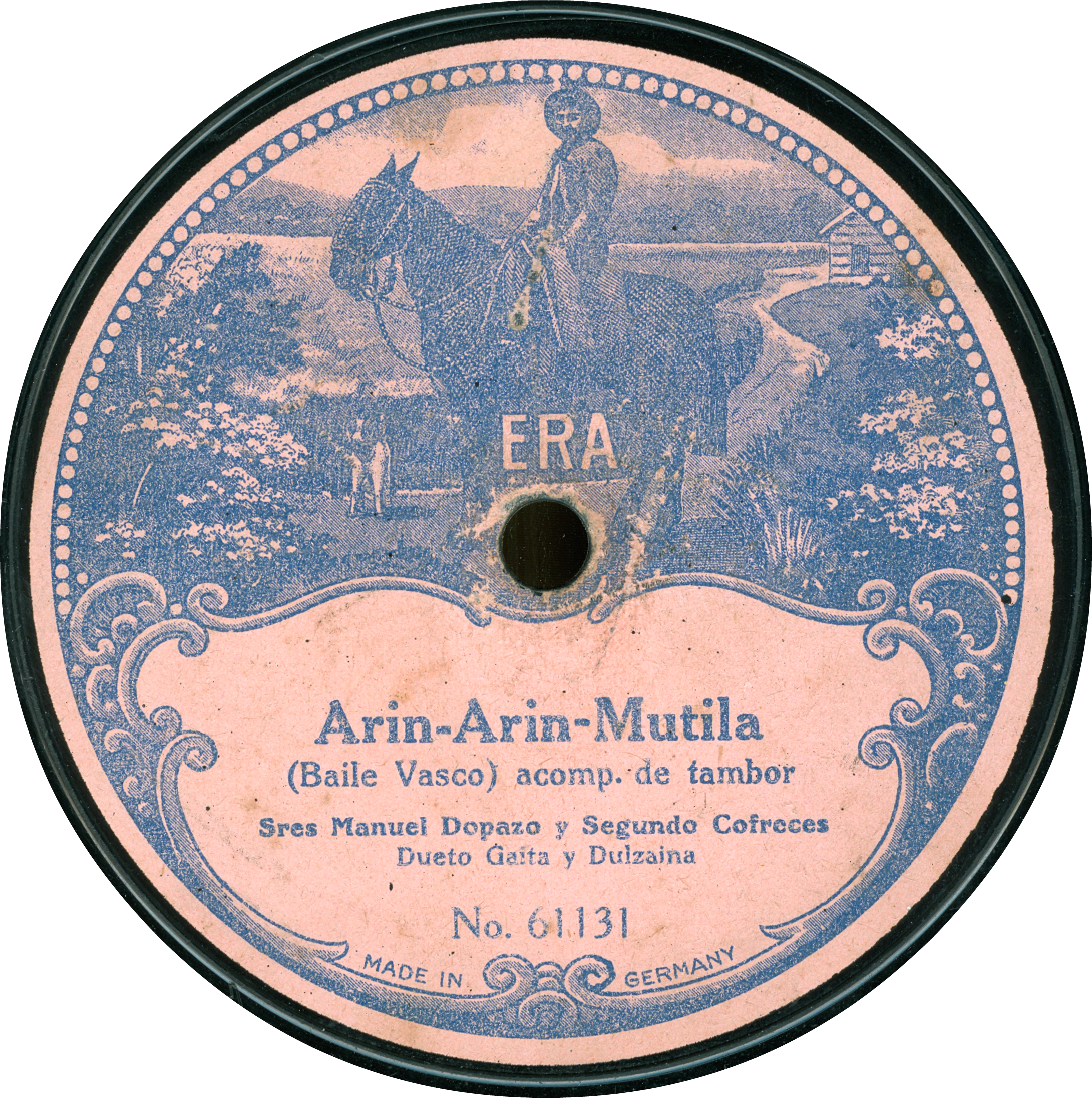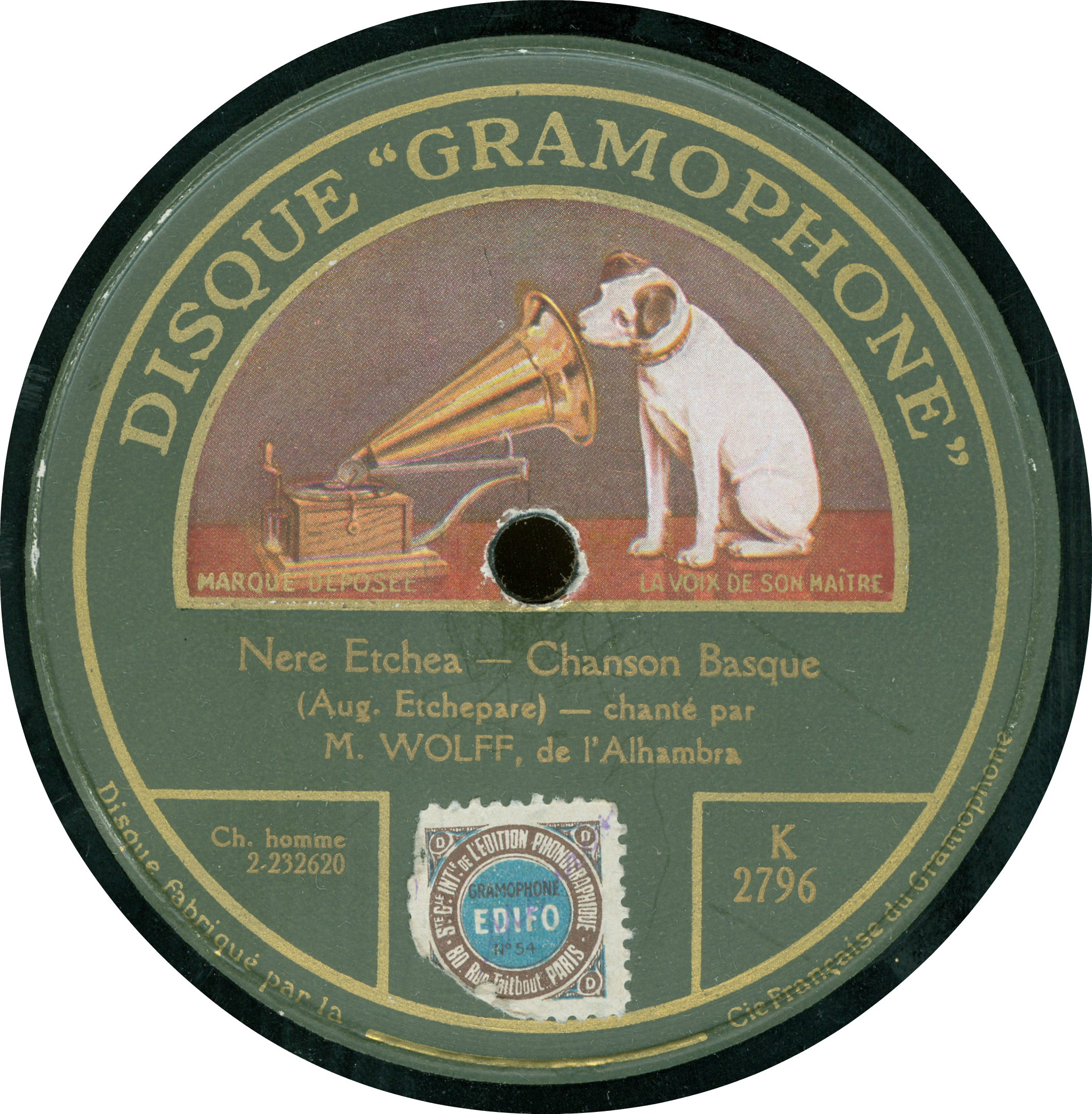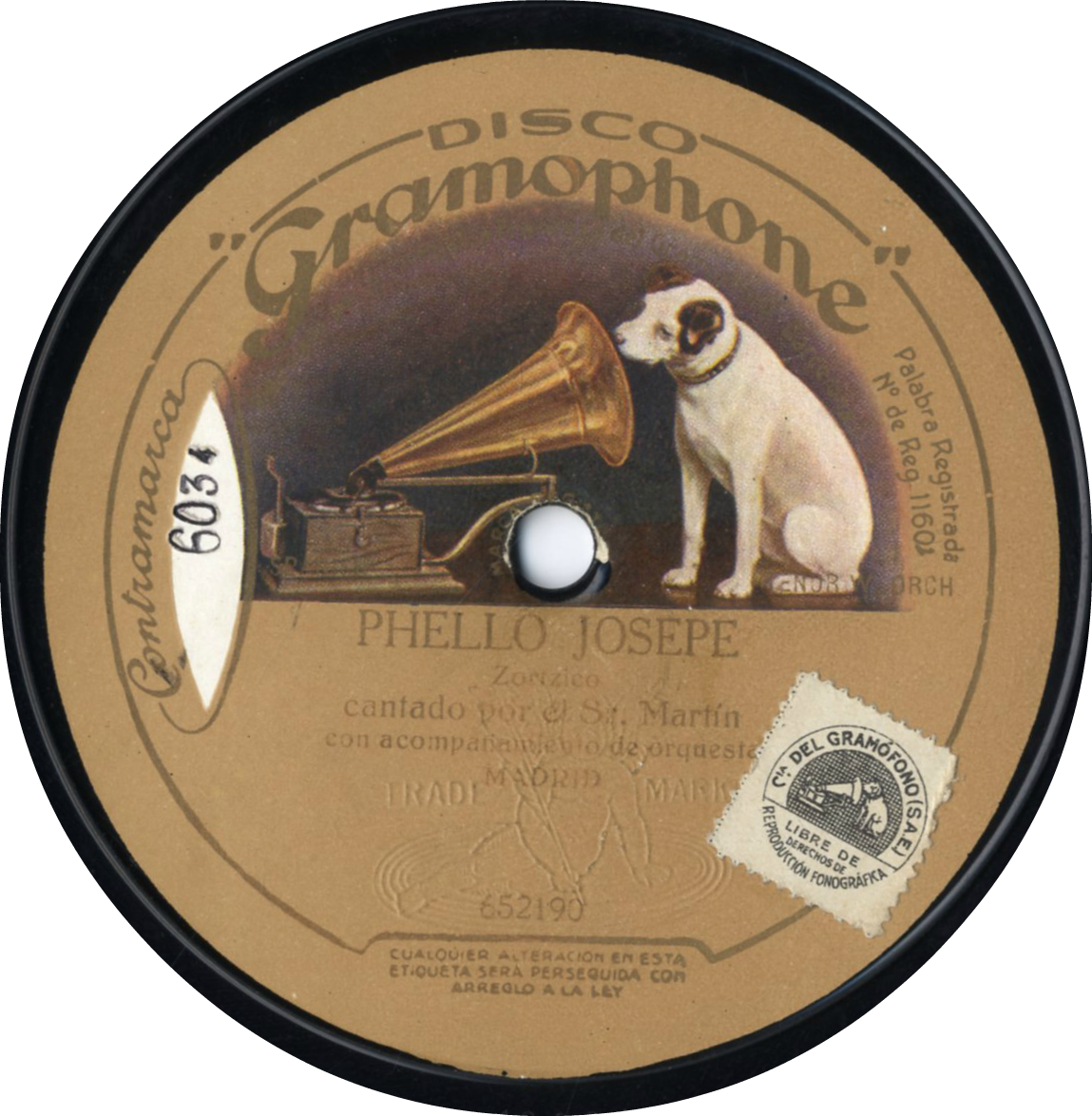
THE EARLY RECORDS
Many of the early commercial recordings by Basque artists were produced overseas, often by performers who had already achieved global recognition. Consequently, most of the commercial releases available in the early 20th century were recorded by musicians of international renown. For instance, Pablo Sarasate recorded for labels like The Gramophone and Typewriter in Paris and Victor Talking Machine in Camden, New Jersey. Similarly, the Basque-origin baritone from New York, Emilio de Gogorza, also made numerous recordings for this American label.
Pablo Sarasate. Capricho vasco. Cie The Gramophone Co., Ltd. (et Filiales). Grabado por el compositor en París en 1904
It’s worth noting that the renowned tenor Florencio Constantino recorded a substantial number of phonograph pieces for various labels during these early years. His recordings appeared on labels like the French Pathé, the German Favorite, and the American Victor Talking Machine, Columbia Graphophone Company, and Columbia Phonograph Company Genl., among others.
Likewise, the baritone from Bilbao, Inocencio Navarro (1) recorded an extensive collection of records. These were initially published under labels like Zonophone and Homophon in October 1908, and later, he continued to record for the Compañía del Gramófono in Barcelona.
The bass singer from Alava, José Mardones, also contributed recordings for labels including Victor Talking Machine, Columbia Graphophone Company, Columbia Phonograph Company Genl., and Regal Graphophone Company.
Simultaneously, the soprano from Bilbao, Antonia Arrieta, recorded for The Gramophone Co. Ltd.
Despite the fact that the music recorded for these companies primarily consisted of arias from popular operas and contemporary hit songs, there was still room for traditional music.
The earliest recordings in the Basque Country were created by Charles Scheuplein, a technician from the Gramophone Company, during his journey to Lisbon in 1905. These recordings include 30 pieces of Basque folk music with matrix numbers ranging from no. 8562 to 8591. The initial seven matrices (8562 to 8568) feature popular Basque dances, including fandangos, contradanza, arin-arin, iriyarena, aurresku, the Hiru damatxo, and a waltz by Oñate, all performed by the renowned txistu player from Zumarraga, Martin Elola (2).
The subsequent eleven records (matrices no. 8569 to 8579) were performed by the Municipal Band from San Sebastian, and they include titles such as San Sebastián, Iriyarena, Gernikako Arbola, Marcha de San Ignacio, Iru Damacho, Adios Euskal Herria, Aritzara, Jota Navarra by Rodoreda, Rigodones by Torre Muzquiz, and Ariñ-ariñ.
The collection is rounded out by recordings made by soloists from the Orfeón Donostiarra, including tenor Federico Carasa, who contributed the majority of the recordings, and baritone Ignacio Erquicia (matrices no. 8580 to 8591). These recordings feature well-known songs like Nere senarra, Laurak bat, Kaiku, Iru damacho, and more.
Between December 1908 and early 1909, the Asturian bass Francisco Meana recorded several Basque songs for Gramophone, including Uso zuria, Adio Euskal Herriari, and Kalian dabiltz. The baritone from Errenteria, Ignacio Tabuyo, also recorded for the same label in Madrid in November 1911. His recordings featured the following titles: Egun batian Loyolan, Gernikako arbola, Nere amak baleki, Nere Andrea, Laurak-bat by Larregla, and the famous zortziko La del pañuelo rojo.
Notably, among the Basque performers who recorded for the Compañía francesa del Gramófono, Lorenzo Martin (3) stands out. In marathon sessions held between February 14th and 16th of 1914 in Madrid, he produced twenty-three matrices (numbered from 18668 to 18690) featuring Basque songs, most of which were in the Basque language. Eresbil has three of these records in its collection, containing titles such as Juana Vishenta Olave, Boga boga, Haurtxo txikia, Ezkongaietan, Gernikako arbola, and Pello Joshepe.
Furthermore, foreign performers also contributed to Basque music recordings. In 1906, the Portuguese soprano Regina Pacini recorded the popular zortzico No te olvido by Villar-Jimenez for the Fonotipia label. In the context of Basque traditional music, certain Basque dances were recorded for the Era label in Buenos Aires by Manuel Dopazo and Segundo Cofredes, a bagpipe and flageolet duet from Argentina.

In early 1915, José Luis de la Rica, a tenor born in Bilbao, made several records with Basque songs for the International Talking Machine in Berlin while he was in Madrid. Around 1920, the Municipal Band of San Sebastian also recorded some pasodobles and habaneras for the same company.
However, not all performers ventured into the recording process. Orchestral recordings presented considerable challenges, mainly because the singers had to position themselves in front of the horn, close to the orchestra and instruments, which resulted in significant hearing strain. Laboratory recordings were typically split into morning and afternoon sessions. When it came to recording popular music, a higher volume of records could be produced, sometimes up to twenty per day. In contrast, when classical music was recorded, no more than three records were typically made during each session.
In the 1920s, Jules Wolff recorded several Basque songs for the Compagnie Française du Gramophone (HMV) in 1925, including Gernikako arbola by Iparraguirre, Nere Etxea by Etxepare, and Lurraren pian, harmonized by Laurent Bossières, along with other harmonizations by E. Bonnal. In 1927, for the same label, Basque tenor Guillaume Cazenave, a native of Hasparren, recorded pieces like Uruten ari nuzu (Uso txuria errazu), Txori berriketaria, and more.
José Luis de la Rica. Itxarkundia. International Talking Machine. Grab.: 1915
The year 1925 marked a significant breakthrough with the advent of electrical recording, leading to an expansion of Basque discography in the following decade. Between December 12th and 14th, 1928, José Luis de la Rica recorded a dozen pieces, this time for the Compañía del Gramófono. These recordings included excerpts from Mendi Mendiyan and El Caserío, as well as Itxarkundia, Oñazez, Aritzari, and other zortzikos.
In March of the following year, the Choral Society of Bilbao, led by Jesús Guridi, recorded twelve folk songs in the Basque language in Barcelona, which were subsequently published in a 6-record album. During the same month, The Orfeón Donostiarra, under the direction of Secundino Esnaola, also recorded for the same label.

Jesús Guridi junto la Sociedad Coral de Bilbao en el Teatro Real de Madrid el 16 de mayo de 1923
On the other hand, concerning the production of records within the Basque Country, it wasn’t until the establishment of the Pathé Font factory in Pasajes in 1916 that this endeavor truly began.
Nevertheless, the Pathé Font factory did not focus on Basque music in its catalog. It was primarily involved in manufacturing, and the matrices used were sourced from abroad. The repertoire predominantly featured excerpts from operas, popular songs, and couplets that were in vogue during that period, along with flamenco recordings. Notable performers associated with the company, mostly of foreign origin, included Florencio Constantino, a renowned tenor from Bilbao, and Jesús Gaviria (4), a tenor from San Sebastian.
(1) Inocencio Navarro, a baritone from Bilbao and a soloist in The Choral Society of Bilbao, was also a member of Orfeó Català. Dentici, Nino. Diccionario biográfico de Cantantes vascos de ópera y zarzuela. Bilbao: Bizkaiko Foru Aldundia, 2002. p. 228
(2) Martín Elola (d. 1935), a txistu performer from Tolosa who settled in Zumárraga, served as the txistu performer in Bilbao starting from 1913. In: Txistulari 120 (1984), p. 9]
(3) A tenor from Bilbao who also performed as a soloist in The Choral Society. Dentici, Nino. Diccionario biográfico de cantantes vascos de ópera y zarzuela. Bilbao, 2002]
(4) His real name is Jesús Aguirregaviria (1892-1975).

